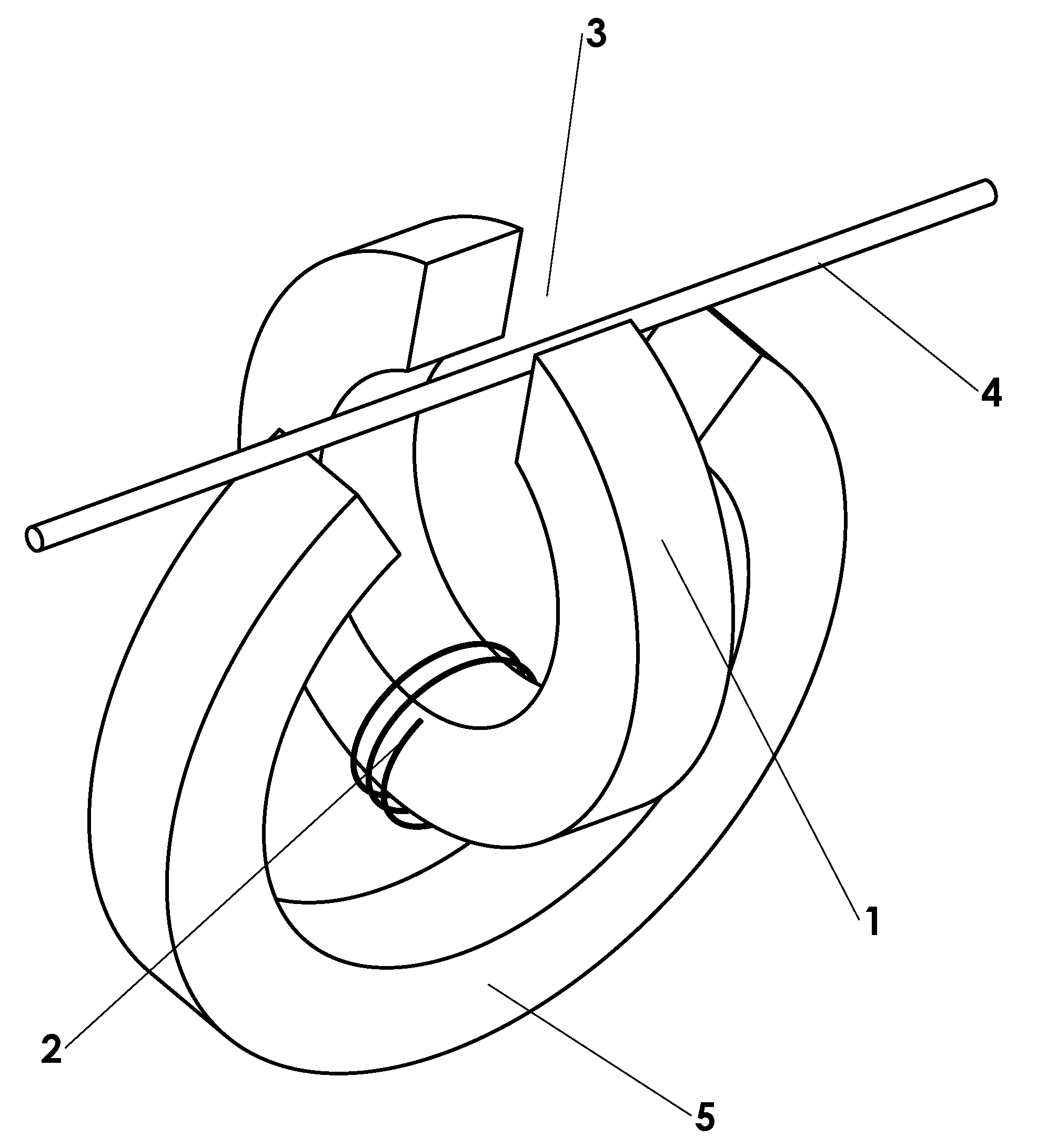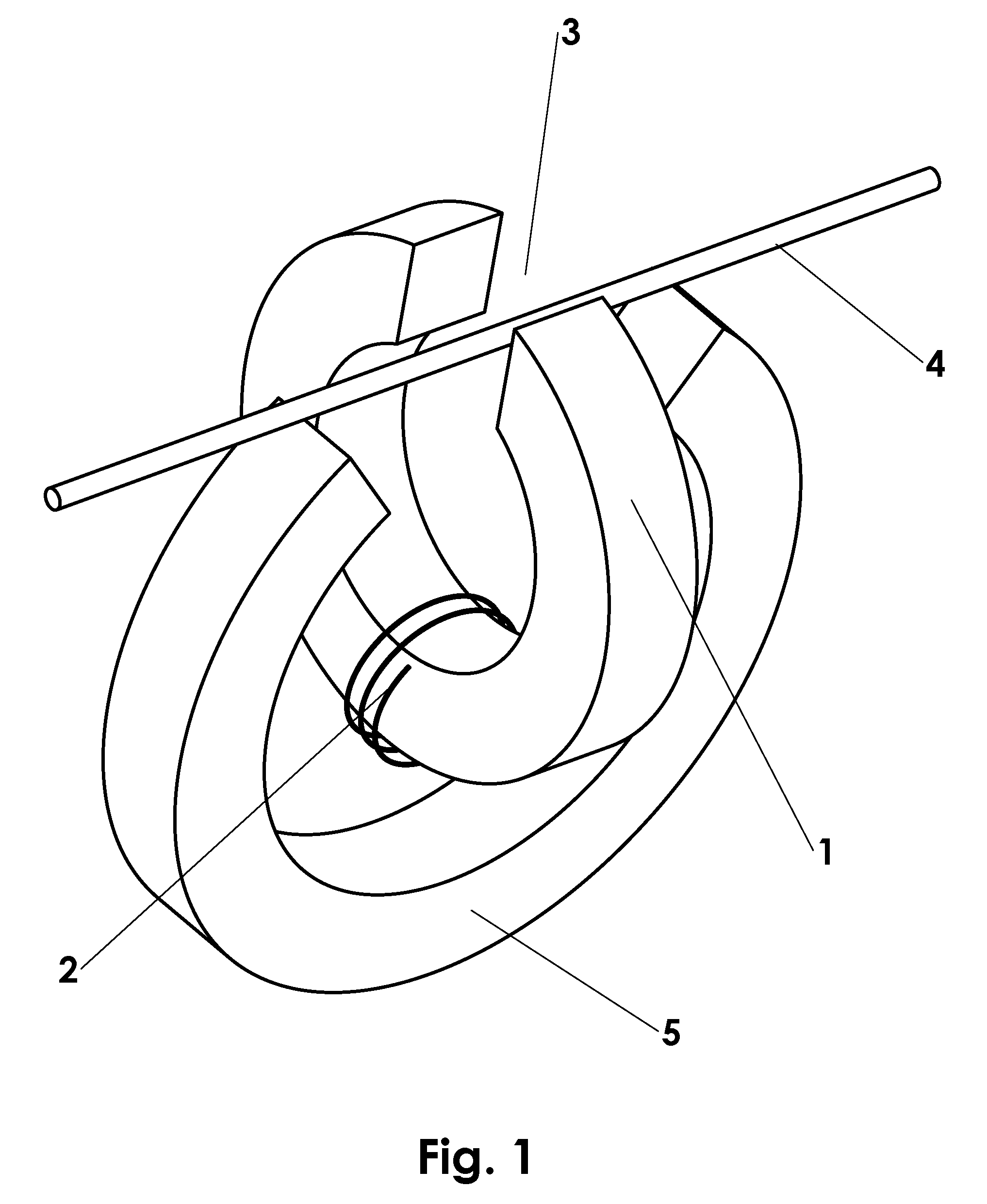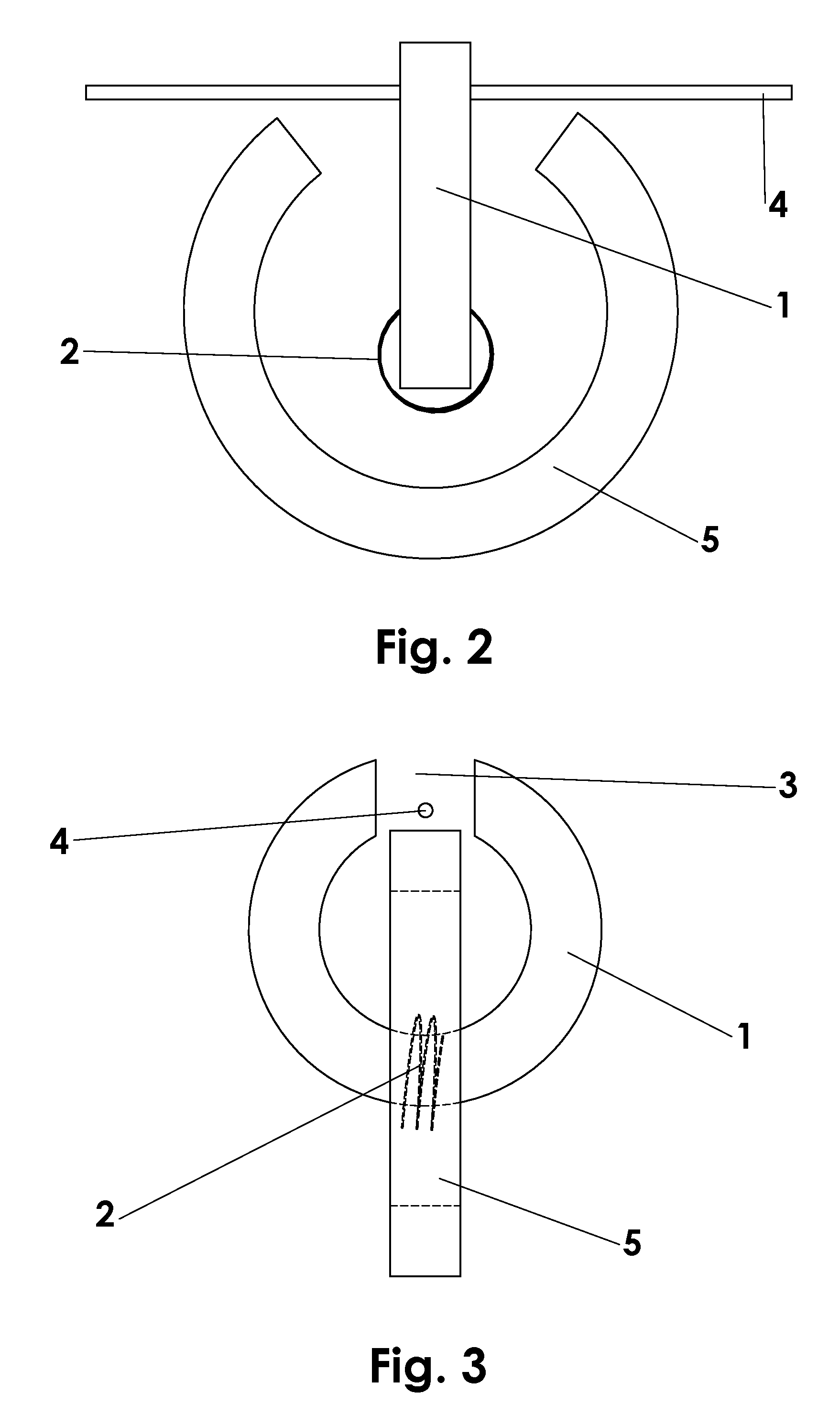Nearly Closed Magnetic Flux Electromagnetic Transducer for Instrument Pickups
- Summary
- Abstract
- Description
- Claims
- Application Information
AI Technical Summary
Benefits of technology
Problems solved by technology
Method used
Image
Examples
Embodiment Construction
. 1 TO 5
[0025]A basic embodiment of the electromagnetic transducer of the invention is shown in FIG. 1-3. Fundamentally, the transducer consists of a magnetically susceptible transducer core 1 upon which one or more turns of an electrically conductive coil 2 are wound. Core 1 is shaped such that it provides a closed path for magnetic flux everywhere except a gap 3 in which a magnetically susceptible string 4 is present. In its preferred embodiment, core 1 would be essentially ring-shaped with gap 3 for the string. In order to drive magnetic flux lengthwise through string 4, it is necessary to provide a permanent magnet 5. This magnet is also shaped in such a way that it provides a closed path for magnetic flux everywhere except the area in which the flux is driven into string 4. Again, the preferred embodiment of this magnet would be ring shaped with a section cut out so the magnetic flux is driven into string 4.
[0026]FIG. 4 shows an alternative embodiment in which a single such ele...
PUM
 Login to View More
Login to View More Abstract
Description
Claims
Application Information
 Login to View More
Login to View More - R&D
- Intellectual Property
- Life Sciences
- Materials
- Tech Scout
- Unparalleled Data Quality
- Higher Quality Content
- 60% Fewer Hallucinations
Browse by: Latest US Patents, China's latest patents, Technical Efficacy Thesaurus, Application Domain, Technology Topic, Popular Technical Reports.
© 2025 PatSnap. All rights reserved.Legal|Privacy policy|Modern Slavery Act Transparency Statement|Sitemap|About US| Contact US: help@patsnap.com



